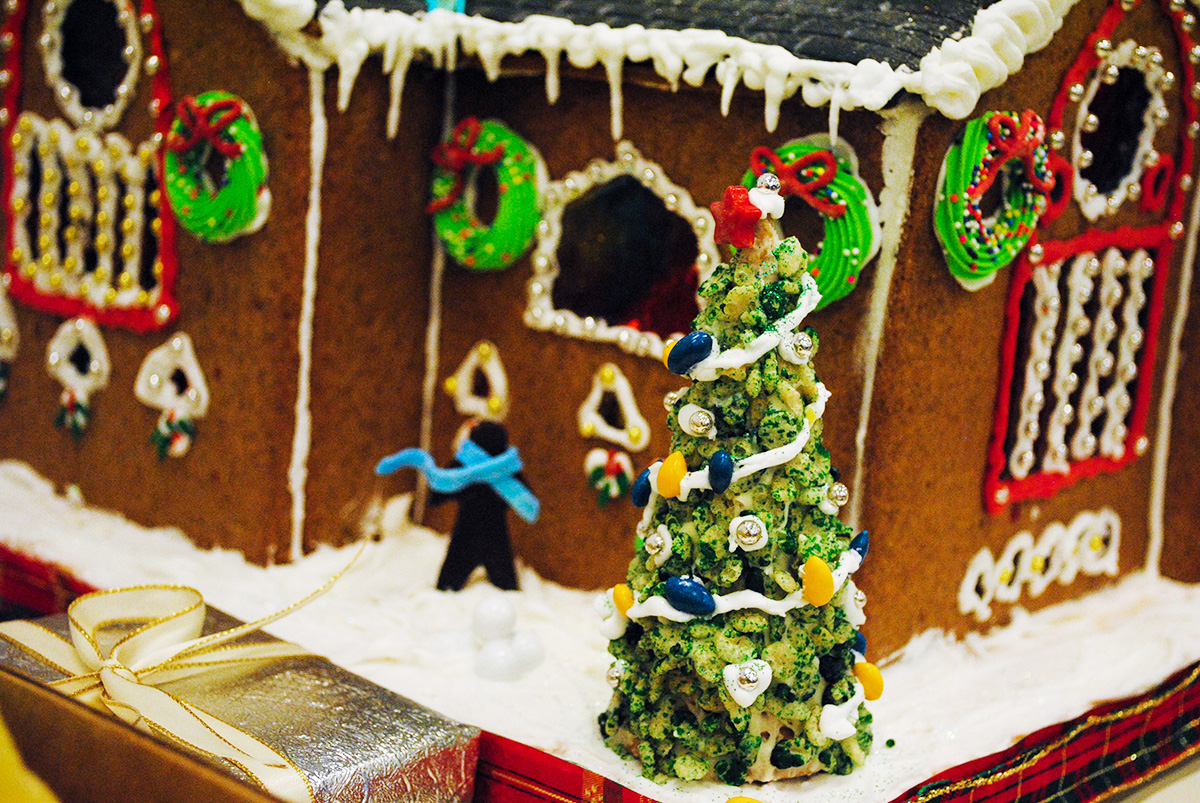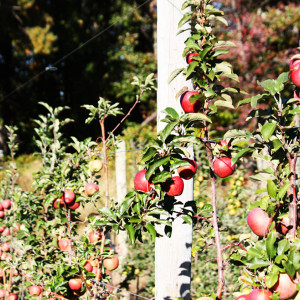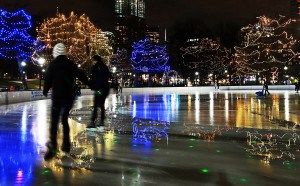How to Make an Amazing Gingerbread House, According to the Pros
Tips and tricks from the competitors in the gingerbread house design competition at the BSA Space.

Photo by Madeline Bilis
If the only gingerbread house you’ve ever made had walls that caved in—and it came from a box—you’re not alone.
Making a gingerbread house is hard work, and the competitors in the Community Design Resource Center’s gingerbread house design competition at the BSA Space would know. They’ve been putting in some painstaking effort to perfect their houses, cleverly repurposing everyday ingredients into festive details for their Boston landmark creations.
We caught up with Mary Ann Upton, architect at designLAB architects, Marissa Lisec, project manager at Connor Architecture, and Josephine Penta, LEED AP at Finegold Alexander Architects, to see how the gingerbread house-making novices among us can improve. Here, we compiled their tips.
Gingerbread cookies are different than gingerbread houses.
It seems like a given, but if you’re baking your own gingerbread for your house, you can’t just grab any recipe from Pinterest. Typical cookie recipes include baking powder, which makes the treat puffy—not a desired characteristic for walls.
“It’s really not bread,” says Mary Ann Upton. “We’re really making a clay or a brick. That’s the way I like to think about it. It’s not a batter, but something structural.”
Ice cream cones = Christmas trees.
All three builders suggested this trick. If you turn a cone upside down and cover it in white chocolate with green food coloring—voila, it’s a tree. Marissa Lisec suggests using Rice Krispies to add texture.

Photo by Madeline Bilis
Two words: Royal icing.
Made of egg whites and powdered sugar, royal icing is an important binding agent.
“We actually get our royal icing at Wilson Farm, up the street from us,” says Lisec. “They make super duper royal icing that hardens like concrete.”
“I would also say [Wilson Farm is] our number one resource for candies and advice,” added Lee Connor, Connor Architecture’s director of marketing.
Pretzels are multifunctional.
Josephine Penta recommends a not-so-sweet ingredient for accents: pretzel sticks. They make for good columns and can also form structures on their own. Below, she used sticks to make a bridge.

Photo by Madeline Bilis
House falling down? Grab some friends.
When piecing the house together, “You need two to three people at once,” says Penta. “One person holding at least two walls. Once you’ve got that up, you’re good.”
Upton also recommends creating an inner structure for added stability. Since it’s not visible from the outside, she uses Rice Krispies. And try not to be too eager to get started on decorating; Lisec says giving yourself enough drying time is imperative.
Jolly Ranchers can work as windows.
“Jolly Ranchers are really good for stained glass,” says Lisec (perhaps for the more ambitious builder). “Once it comes out of the oven, you want to hit the glass with a blow torch, if you happen to have one.”
She says the blowtorch smooths out the glass.
For perfect snow, combine coconut flakes and Luster Dust.
Lisec is an avid user of Luster Dust, which is a type of edible glitter. While it comes in different colors, she prefers silver to spread on top of snow—Upton recommends coconut flakes for this. Blowing Luster Dust into the corners of a house can make for realistic-looking new fallen snow.
Pull-apart Twizzlers are a secret weapon.
The cherry flavored pull-apart version of Twizzlers are bendable and easy to shape into architectural details, according to Penta. They can outline windows or line the edges of a roof.
The Community Design Resource Center’s fourth annual gingerbread design competition is on view at the BSA Space from December 8 through 22, 290 Congress Street, Suite 200, architects.org.


